桑皮紙:兩百年不腐“寶畫”背後的秘密
故事要從故宮的東北角説起,這是當年乾隆皇帝為自己退位居住而預建的倦勤齋,紫禁城最奢華的宮殿。2002年籌備故宮大修之時,倦勤齋成為重中之重。進入倦勤齋,映入眼簾的是一幅畫滿了紫藤蘿的通景畫,面積達170多平方米。經歷200多年的歲月風雨,它如何奇跡般地保存了下來?
In the northeast corner of the Forbidden City, a courtyard named Juanqinzhai was built by Emperor Qianlong as his retirement residence. It was the most luxurious palace in the Forbidden City. In 2002, the Juanqinzhai was paid special attention during renovation of the Forbidden City. Upon entering the Juanqinzhai, one could see a landscape painting full of purple vines, covering an area of more than 170 square meters. After more than 200 years, the painting is in a miraculously mint condition.
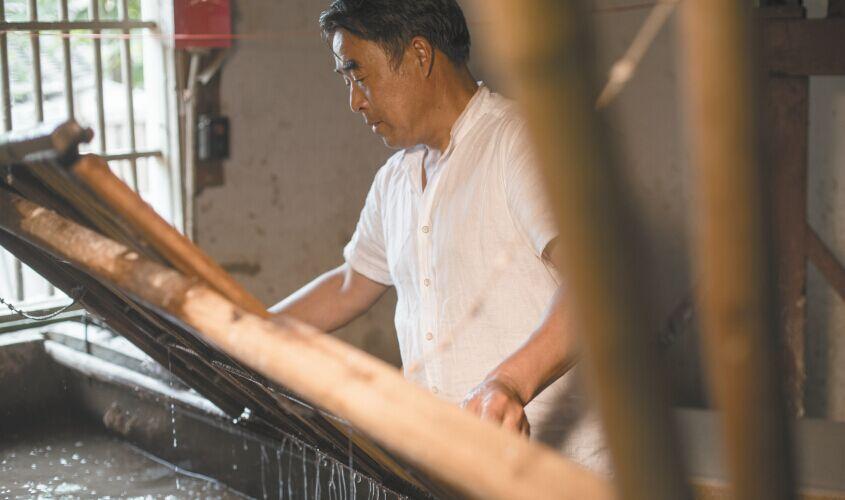
原來,在通景畫背面有一種特殊的裝裱紙,修復人員以殘存的紙樣為線索,發現這是一種以桑樹皮為原料的紙張,極為堅韌,承拉力強。專家認為要修復倦勤齋,就必須找到這種神奇的紙!最終工作人員找到安徽王柏林製作的桑皮紙作為修復用紙。這種桑皮紙耐折度高達9000多次,是人民幣用紙的3倍。
A special mounting paper was discovered at the back of the landscape painting. Based on the remaining paper samples, the restorers found that this paper was made of mulberry bark which is extremely tough and full of strength. So, experts decided to find this legendary paper in order to repair Juanqinzhai! Finally, the staff found the mulberry paper made by Wang Bailin, a handicraftsman in Anhui Province. The folding endurance of this kind of mulberry paper is as high as 9,000 times, which is three times that of RMB paper.
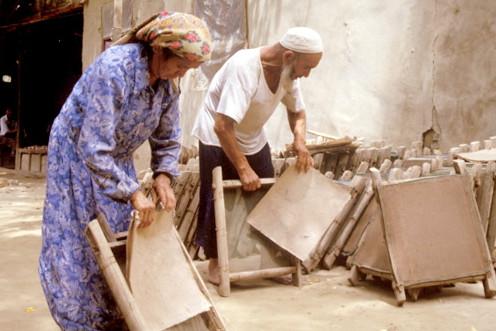
由此,神秘的桑皮紙重新進入了大眾的視野。桑皮紙,起源於漢代,其製作技藝比蔡倫改進的造紙術還早300多年。它也是古絲綢之路上的使者,到明清時期,中原與新疆交流頻繁,出自新疆的桑皮紙也為中原地區人們所用。可以説,絲綢之路有多長,桑皮紙的傳播就有多長,它成為古代中原與周邊地區、中國與亞歐各國交往的重要載體。
As a result, the mysterious mulberry paper reentered the public field of vision. Mulberry paper originated in the Han Dynasty, more than 300 years earlier than Cai Lun’s improved papermaking technology. It was also an emissary on the ancient Silk Road. In the Ming and Qing Dynasties, there were frequent exchanges between the Central Plains and Xinjiang and the mulberry paper from Xinjiang was also used by people in the Central Plains. The fame of the mulberry paper was spread as far as the silk road. It has become an important carrier of exchanges between the ancient Central Plains and surrounding areas, China and Asian and European countries.
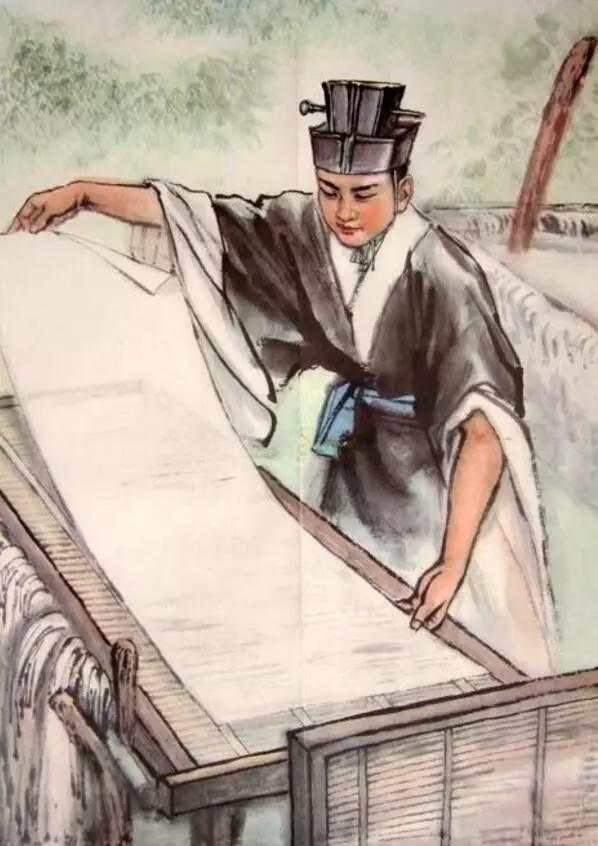
桑皮紙顛覆了“紙是脆弱的”概念,其最大特點是柔軟、拉力強、不褪色、吸水力強,這也是倦勤齋屋頂的通景畫經歷了百年溫度濕度變化、熱脹冷縮依然保存下來的原因。桑皮紙純正的纖維構造及其特殊的香氣,還可防蛀蟲叮咬。古時多用於高檔書畫的裝裱、書冊典籍的印刷,民國時期曾有用桑皮紙印製的鈔票。中等品質的桑皮紙一般用於包裝茶葉、草藥、食物等。但隨著現代化造紙工業成品的出現,桑皮紙由於純手工打造、産量少,逐漸退出了人們的日常生活。
Mulberry paper contradicts the idea of "paper is fragile". It is characterized by softness, strong tensile force, slow to fade and strong water absorption. This is also the reason why the landscape paintings on the roof of Juanqinzhai have survived the changes of temperature and humidity, heat expansion and cold contraction for hundreds of years. The pure fiber structure and special aroma of mulberry paper can also prevent moth bites. In ancient times, it was mostly used for mounting high-grade calligraphy and painting, printing books. In the 1910s, banknotes were printed with mulberry paper. Medium quality mulberry paper is generally used for packaging tea, herbal medicine, food, etc. However, with the emergence of modern paper industry products, mulberry paper has gradually withdrawn from people’s daily life due to its pure hand-made and low output.
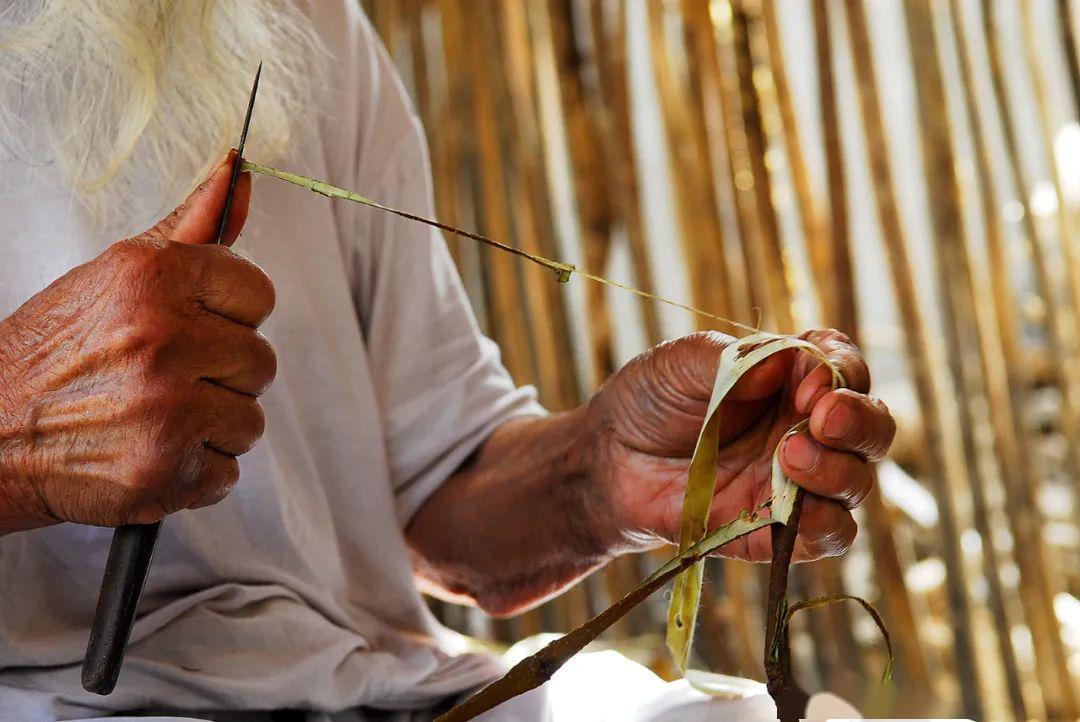
桑皮紙的製作工藝相當複雜,總共有72道純手工工序。以桑樹枝內皮為原料,經過伐條、浸泡、剝皮、鍋煮、過濾、錘搗、發酵、撈紙、濾水、晾曬、揭紙、分類、打磨等工序。其使用的特定材料、添加劑的量等都蘊含著科學原理,這正是它柔軟而堅韌的秘訣所在。
The production process of mulberry paper is quite complex as there are 72 pure manual processes. Mulberry branch endodermis was used as raw material through cutting, soaking, peeling, boiling, filtering, hammering, fermentation, paper fishing, water filtering, air drying, paper uncovering, classification, grinding and other processes. The specific materials used and the amount of additives contain scientific principles which is the secret of its softness and tenacity.
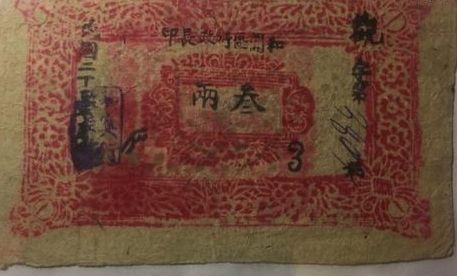
時代更疊,在這門古老技藝瀕臨消失、傳承製作人屈指可數的時候,故宮大修喚醒了桑皮紙手工製作技藝。因為人們發現,桑皮紙在傳統書畫創作、修復方面的作用,是現代機器産品所不能替代的。2006年,維吾爾族桑皮紙製作技藝被列入首批國家級非物質文化遺産名錄;2008年,安徽桑皮紙製作技藝列入第二批國家級非物質文化遺産名錄,桑皮紙的科學價值、人文價值、歷史研究價值得到重視。如今越來越多的年輕人回到家鄉學習桑皮紙的製作,將這一手工技藝傳承下去。
The ancient craft was on the verge of disappearing with a small number of inheritors when the renovation of the Forbidden City handed a second lease of life to the craft of handmade mulberry paper. Artists became aware that the role of mulberry paper in traditional painting and calligraphy creation and restoration could not be replaced by modern machine products. In 2006, the production technology of Uygur mulberry paper was listed in the first batch of National Intangible Cultural Heritage List; in 2008, the production technology of Anhui mulberry paper was listed in the second batch of National Intangible Cultural Heritage List, and the scientific value, humanistic value and historical research value of mulberry paper were valued. Nowadays, more young people are coming back to their hometowns to learn the art of making mulberry paper and to pass on this craft.










